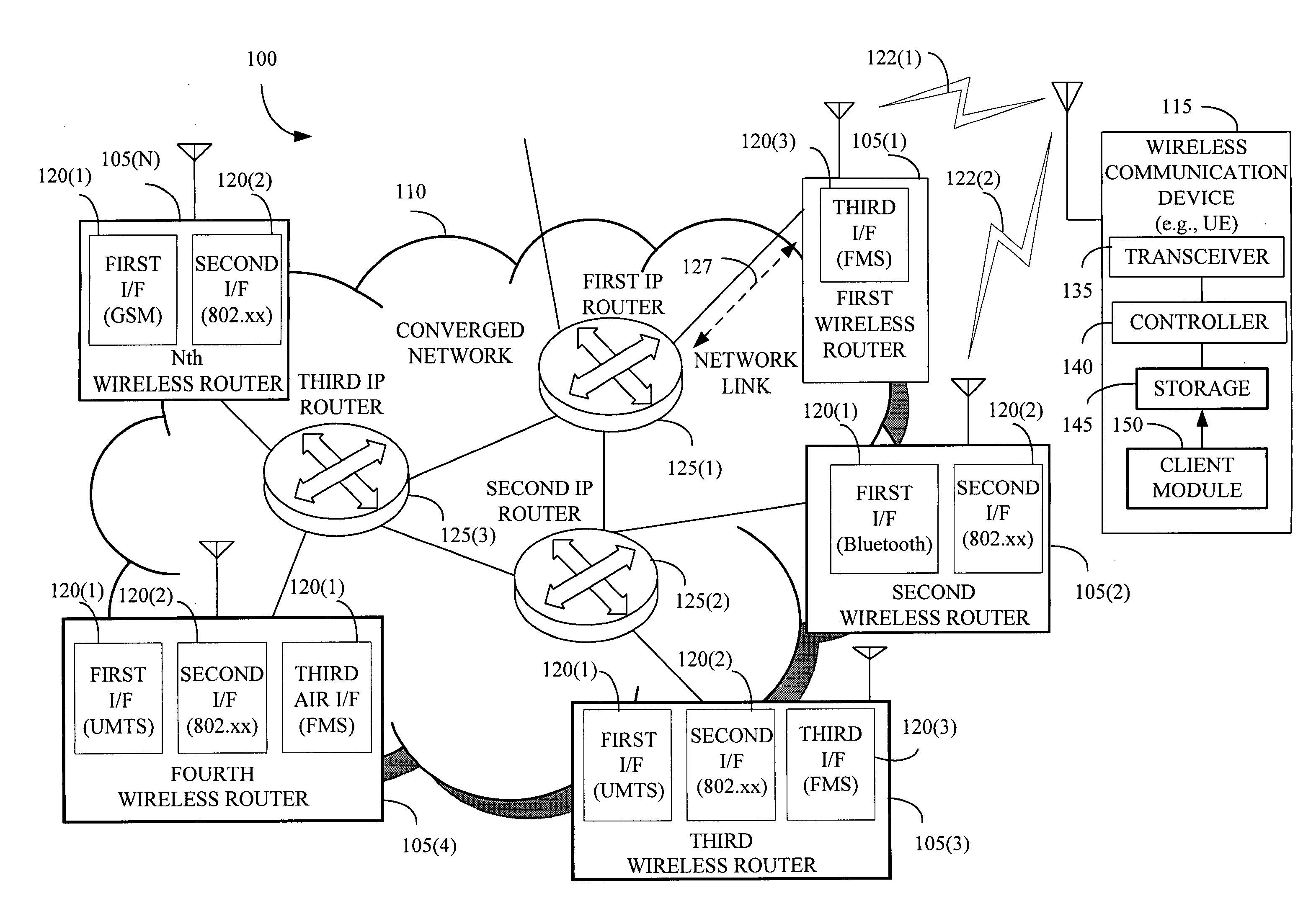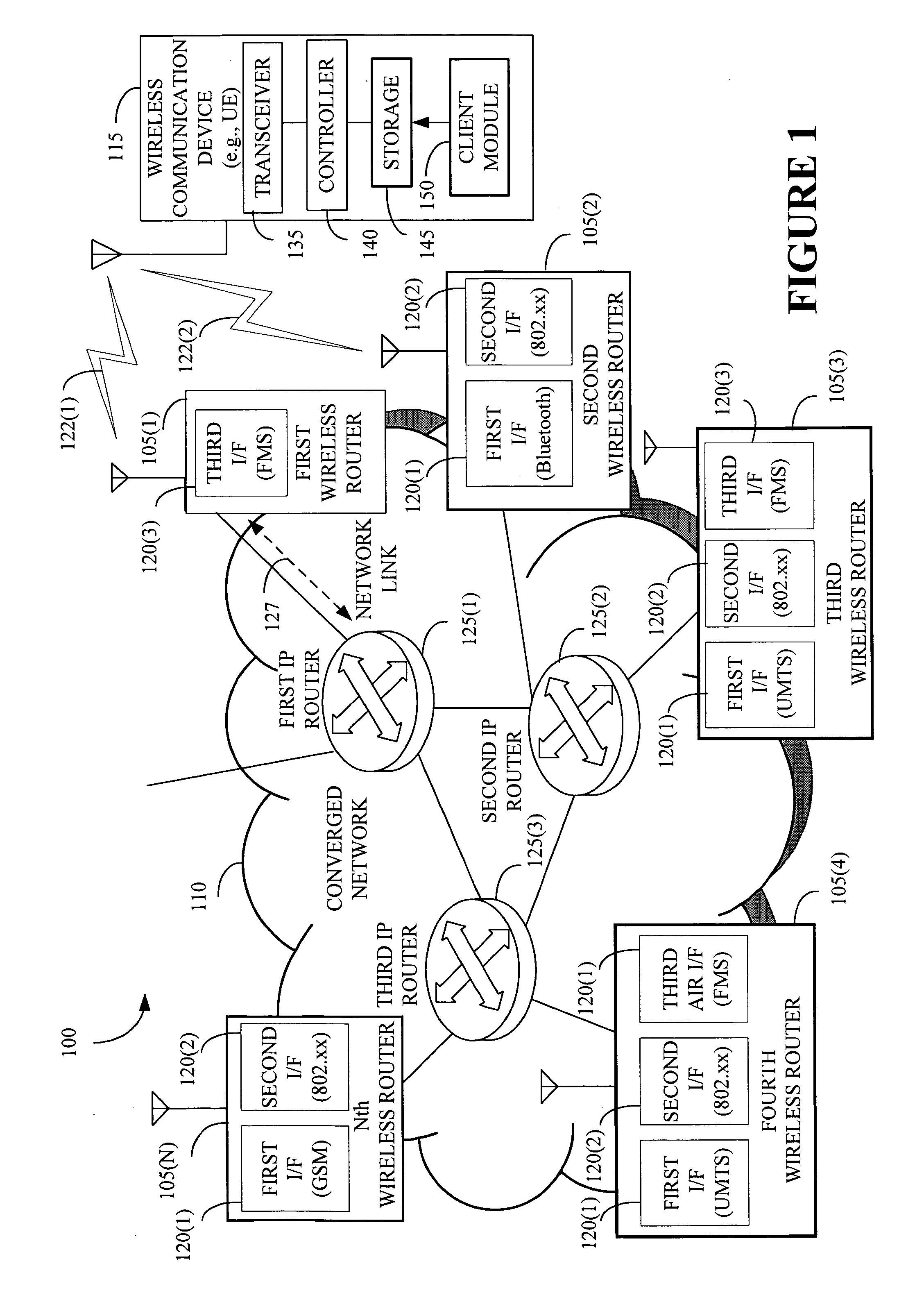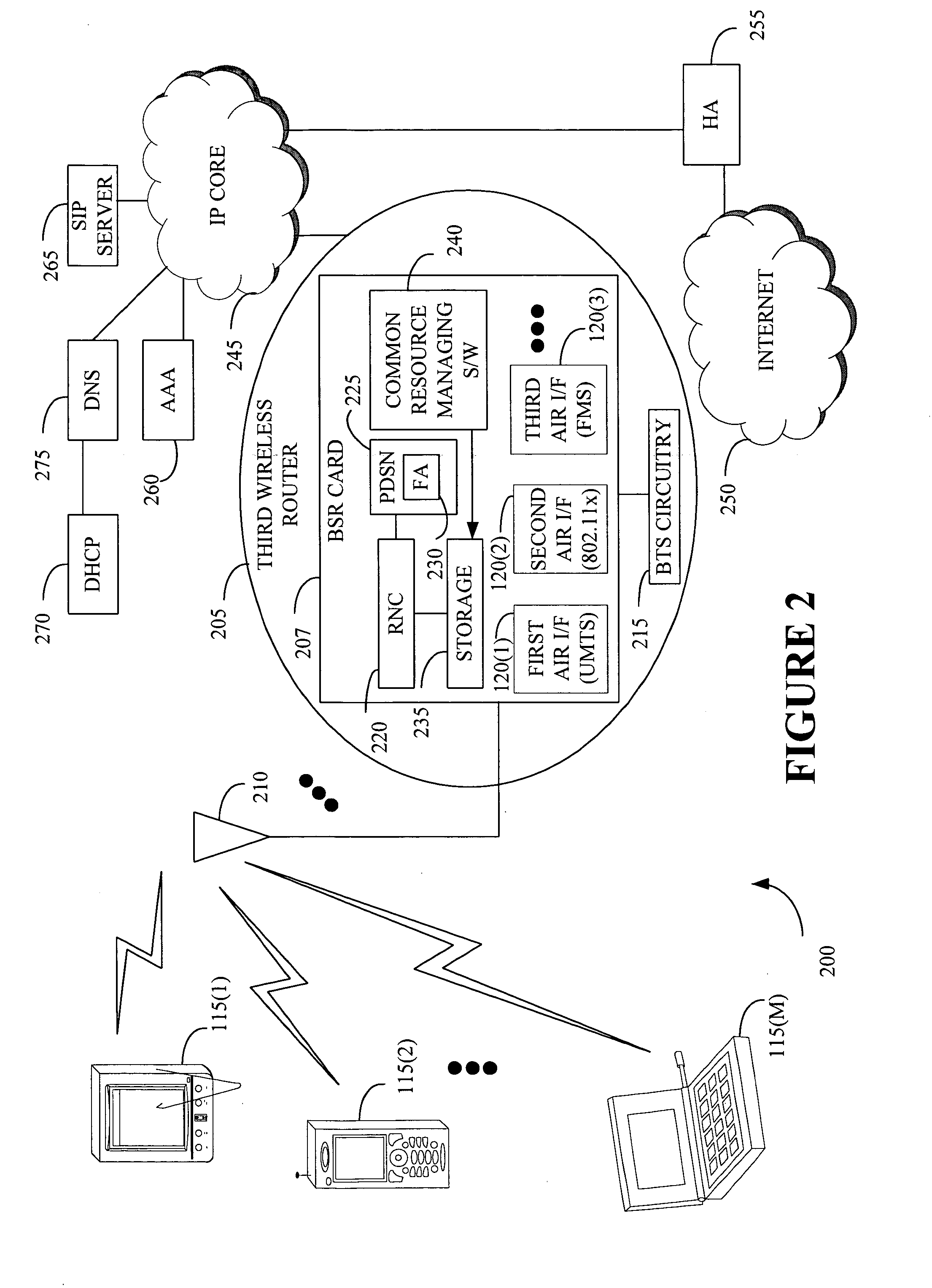[0012] The following presents a simplified summary of the invention in order to provide a basic understanding of some aspects of the invention. This summary is not an exhaustive overview of the invention. It is not intended to identify key or critical elements of the invention or to delineate the scope of the invention. Its sole purpose is to present some concepts in a simplified form as a prelude to the more detailed description that is discussed later.
[0013] In one embodiment of the present invention, a method is provided for managing one or more Internet Protocol based resources in a packet-based access network. The method comprises enabling at least one of a first wireless connection over a first interface and a second wireless connection being simultaneously active over a second interface for a particular user, distributing information indicative of transport of a plurality of packets during a specific service of the particular user across the first and second wireless connections and at least one wireline connection, and selecting at least one connection from the first and second wireless connections and the at least one wireline connection based on the information associated therewith to determine routing of the plurality of packets in the packet-based access network.
[0014] In another embodiment, a wireless router is disposed at a base station to commonly manage one or more resources of a packet-based access network across a wireless network portion and a fixed, wired network portion thereof. The wireless router comprises a first interface to keep active a first connection with a wireless communication device for a particular user thereof, a second interface to simultaneously keep active a second connection to the wireless communication device for jointly managing the one or more resources on a network layer, each interface of the first and second interfaces enables a different type of Internet protocol-based access, and a storage storing instructions to analyze transport of the plurality of packets across the wireless router during a specific service of the particular user for forwarding the plurality of packets based on an Internet protocol-based strategy being utilized on the network layer.
[0015] In yet another embodiment, a communication system may commonly manage one or more resources to determine routing of a plurality of packets for a particular user on a network layer of a packet-based access network across a fixed, wired network portion and a wireless network portion thereof. The communication system comprises a first and a second wireless router associated with the wireless network portion. Each wireless router of the first and second wireless routers may enable at least one of a first connection active over a first interface and a second connection being simultaneously active over a second interface such that each interface of the first and second interfaces provides a different type of Internet protocol-based access. A particular one of the first and second wireless routers may selectively communicate with a wireless communication device over any one of the at least one of the first connection active over the first interface and the second connection being simultaneously active over the second interface. The particular one of the first and second wireless routers may analyze transport of the plurality of packets between the first wireless router and a first Internet protocol-based router associated with the fixed, wired network portion of the packet-based access network during a specific service of the particular user for forwarding the plurality of packets based on an Internet protocol-based strategy being utilized on the network layer.
[0016] In still another embodiment, an article comprising a computer readable storage medium storing instructions that, when executed cause a communication system to enable at least one of a first wireless connection over a first interface and a second wireless connection being simultaneously active over a second interface for a particular user to manage one or more Internet Protocol based resources in a packet-based access network, distribute information indicative of transport of a plurality of packets during a specific service of the particular user across the first and second wireless connections and at least one wireline connection, and select at least one connection from the first and second wireless connections and the at least one wireline connection based on the information associated therewith to determine routing of the plurality of packets in the packet-based access network.
[0017] In one illustrative embodiment, an apparatus may manage one or more Internet Protocol based resources in a packet-based access network. The apparatus comprises means for enabling at least one of a first wireless connection over a first interface and a second wireless connection being simultaneously active over a second interface for a particular user, means for distributing information indicative of transport of a plurality of packets during a specific service of the particular user across the first and second wireless connections and at least one wireline connection, and means for selecting at least one connection from the first and second wireless connections and the at least one wireline connection based on the information associated therewith to determine routing of the plurality of packets in the packet-based access network.
 Login to View More
Login to View More  Login to View More
Login to View More 


